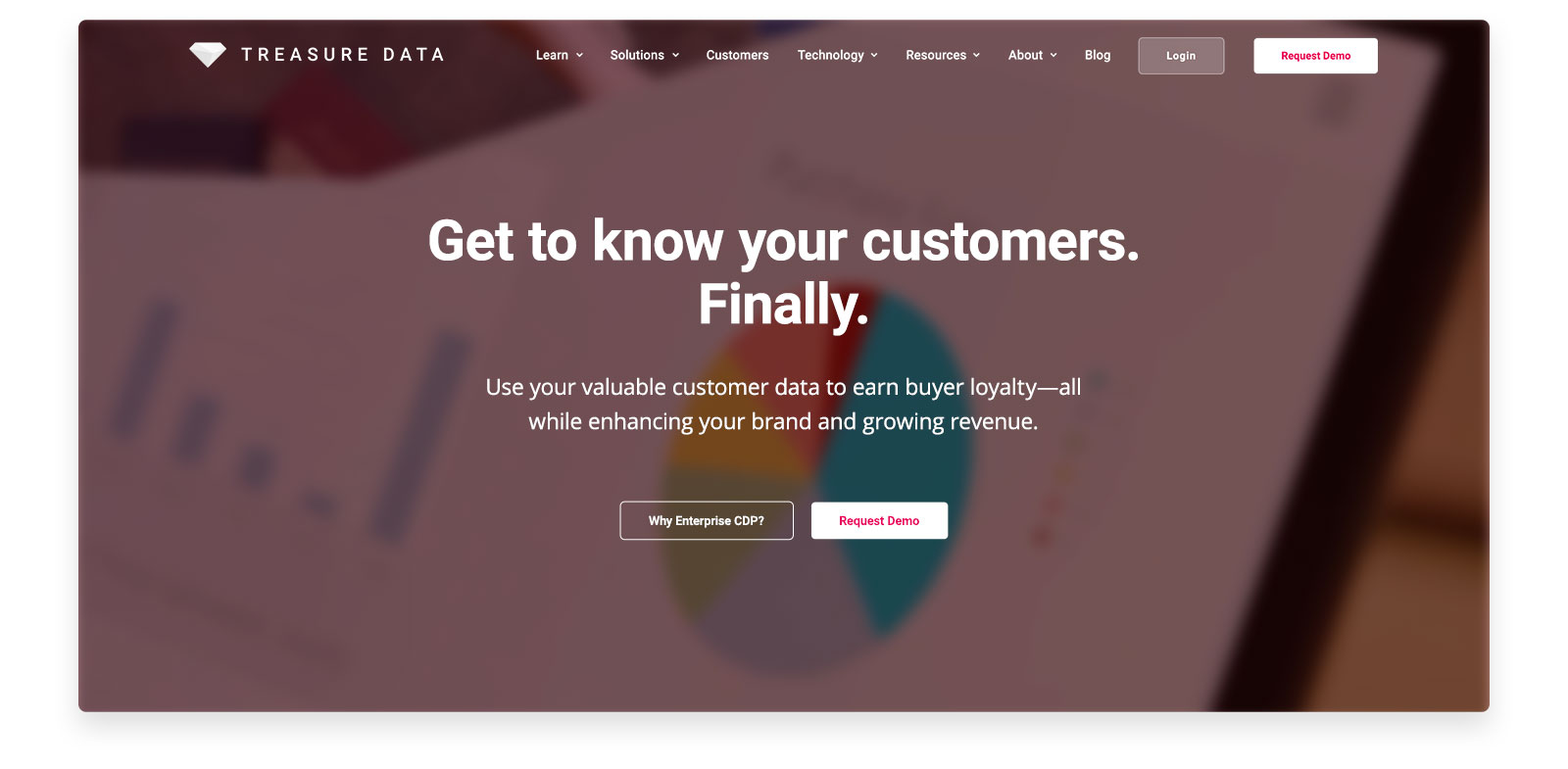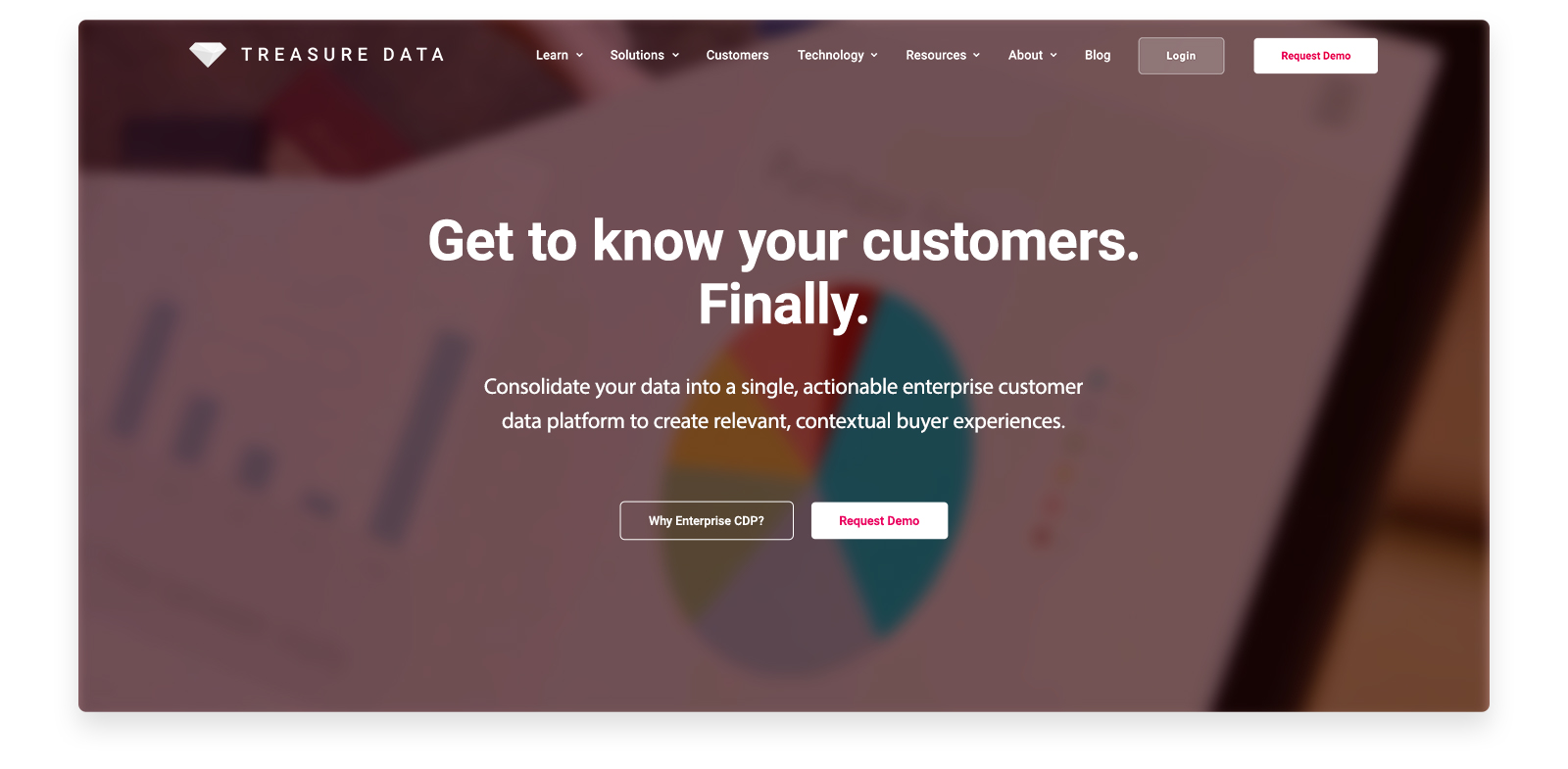Marketing at a Human Scale: Show Your Web Visitors that You Really Know Them
Show Your Web Visitors That You Really Know Them
A company’s homepage is the digital storefront that determines whether a visitor stays interested or moves along. Prospective and current customers increasingly make an assessment on whether a homepage reflects their interests or needs when landing there. Every online marketer wants to engage as many visitors as possible, and leveraging additional customer data can make this happen. While brick and mortar storefronts have to cast a wide net to attract random passersby, homepages can be personalized to cater to each unique user in real time.
According to Gartner, “marketing leaders responsible for customer experience often don’t understand why their websites fail to meet prospect, customer, and internal expectations.”
It’s a powerful idea: If you know who’s coming to your homepage before they get there, you can serve up a targeted experience for each visitor and ensure a more positive and valuable user experience. By extending your individualized sales and marketing strategies to your website, web personalization can also be a good companion to Account Based Marketing.
At Treasure Data, we practice what we preach by using our CDP for real-time homepage personalization. In this post, I’ll show you how we use our own Treasure Data enterprise Customer Data Platform (CDP) — to unify data from Salesforce, Marketo, and real-time website visits to create a dynamic homepage that displays content catering to a visitor’s job title. This tactic works with any CRM or marketing automation technology, so don’t worry if you don’t use the same applications we do.
Step One: Create Your Audiences
We first identified the personas to whom we wanted to deliver targeted content. We created three broad personas and determined relevant job titles for each category:
- C-Level Decision Makers (CEO, CIO, CFO)
- Business Owners (VP, Director, Manager)
- Product Users (Analyst, Marketing Operations)
Step Two: Unify Your Data
Using our Treasure Data CDP, we created a master table of data submitted through Marketo forms, including names, job titles, email addresses, company names, and cookie IDs. We then linked this master table to our Salesforce contact data by email, and to website behavior data (page views, forms, etc.) by cookie ID to create our profile set.
With our master table unifying all the relevant data we have on potential visitors to our website, it became relatively easy to serve up targeted content automatically.
Let’s look at an example of a business owner visiting the Treasure Data website. If they are a returning visitor and we already have their cookie ID, they’ll see a targeted homepage as soon as they come to the site. If we don’t already know the visitor, we can track their behavior in real time with a new cookie. And if they fill out a web form and provide a job title that matches our list or includes a combination of keywords such as “director” and “analytics,” we can display targeted content when they return to our homepage during their visit or when they come back to our site another time.
Step Three: Enhance Your Data
The beautiful thing about the way this website personalization process is set up is that it gets more intelligent as account executives and sales development representatives (SDR) update contact and lead data in Salesforce.
For example, if a person initially fills out a form with their job title as “Analytics” and an SDR updates that person’s job title in Salesforce to “VP of Analytics” at a later date, the contact will automatically move up to our business owner persona because the new job title contains “VP”.
Similarly, the more detail we can get about each contact’s industry, length of engagement with us, specific pain points, etc., the more granular our targeted messaging can become.
A Quick Walk Through the Process
When an anonymous visitor comes to our website, they are assigned a cookie ID if they agree to be tracked. If they fill out a Marketo form on our site to download an eBook, whitepaper, or similar asset, their anonymous cookie ID links automatically to their Marketo Form Submission data and their Salesforce data.
As soon as the user submits his or her job title, he or she is placed in the proper segment and we can change our homepage with targeted messaging:
First Time Visitors Messaging (Unknown Persona)

C-Level Executive Messaging

Business Owner Messaging

Product User Messaging

The next time this visitor comes to our site, we’ll already have their information in SFDC and Marketo, so they will see targeted messaging right when they come to the homepage.
If you want to try this yourself, check out our homepage to see what messaging appears. Then go fill out the form to download The Dummies Guide to Enterprise Customer Data Platforms. After you complete that process, go back to our homepage and see how the messaging has changed based on your job title.
Web Development Work
In addition to unifying data from Salesforce, Marketo, and user behavior using our CDP, our web team integrated the Treasure Data Segmentation API with treasuredata.com allowing the personalization of content based on persona- and geolocation-based segments.
GDPR Implications
Under new data privacy regulations that impact how we do business with citizens of the European Union, web personalization now depends on a visitor’s willingness to allow the use of their personal identifiable information (PII). That also includes their consent to having a website use tracking cookies that help associate users to their device(s). In the event that consent is not granted, personalization is not carried out and those users are served generic web content. We discuss options for asking for consent in our blog post on “Solving the GDPR Cookie Paradox”.
Future Personalization Efforts
Web personalization is just the beginning of how we’re using data unification and real-time segmentation to speak to our customers as individuals.
As we continue on this journey, other use cases will include the following:
- Multi-Touch Attribution
By understanding how marketing campaigns relate to revenue across different touch points, we can give value to each marketing activity based on what’s in the pipeline and what deals have closed. Attribution data reveals trends and patterns that help determine how marketing dollars should be spent. - Social Data Integration
By integrating insights from Facebook, YouTube, and Twitter, we can determine what messaging is most effective and how to allocate budget across channels. - Live Marketing Dashboard
For greater data transparency among all stakeholders, a central marketing dashboard provides the most current and up-to-date insights from all of our marketing campaigns and channels in one place.
There are more than 6,800 marketing technology solutions on the market today that claim to be able to enhance the customer experience. It’s overwhelming for enterprise organizations, but I hope you come away from this post with a clear idea of how a CDP can unify your customer data for greater personalization. We use our CDP for our own marketing, and have found to be a powerfully effective tool to create human connections with our customers.
To learn more, visit us at treasuredata.com or call us at 866-899-5386.